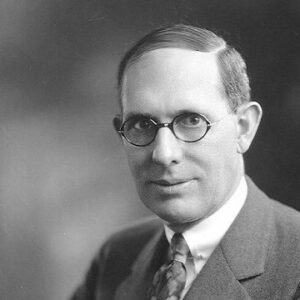Charles F. Kettering, widely regarded as one of America’s greatest inventors, was an electrical engineer and industrial pioneer. He held the position of vice president of General Motors Research Corporation for a continuous 27 years. Among his 186 inventions were the electric starter motor and leaded gasoline. His inventions are known to have made a significant contribution to the current vehicle industry’s development. In addition to aviation technologies, medical research, and diesel locomotives, some of his inventions were utilized in these sectors. Kettering spent a significant portion of his life as a passionate social philosopher, farmer, and educator. He also invented the Freon refrigerant, which is used for air conditioning and refrigeration. He invented the world’s first aerial missile, dubbed “Bug,” which paved the way for future innovations of guided missiles and similar devices. Numerous contributions were made by him to National Cash Register, where he invented the first electric cash registers and accounting machines. During his school and college years, he had vision difficulties, which hindered his first schooling.
Youth and Early Life
Charles F. Kettering was born in Loudonville, Ohio, to Jacob Kettering and Martha Hunter Kettering as their fourth child.
He was a voracious reader and an inquisitive boy who was always searching for new and improved methods. He attended Loudonville’s Loudonville High School.
After completing high school, he accepted a teaching position at Bunker Hill School, where his sister Emma was already employed. The work paid for his college expenditures in the future.
He first attended The College of Wooster before transferring to The Ohio State University, where he dropped out owing to vision problems. He became the foreman of a crew installing telephone lines.
The unexpected termination of his studies due to vision difficulties originally caused him to become depressed. Nonetheless, he chose to put his electrical engineering skills to use.
After his vision improved, he returned to The Ohio State University to continue his degree. He earned a degree in electrical engineering in 1904.
Charles F. Kettering’s Career
In 1904, directly following his graduation, he began working at the National Cash Register research laboratory. During his five years at the company, he earned 23 patents.
In 1907, his colleague Edward A. Deeds recommended him to work on car improvements, emphasizing the market for the same. They collaborated with other engineers on the project and quickly earned the nickname “Barn Gang.”
In 1909, he resigned from National Cash Register and proceeded to work full-time on car advancements and innovations. The ‘Barn Gang’ registered as Dayton Engineering Laboratories Company, also known as Delco.
In 1911, he designed and patented the first electric starter in the world. The following year, The General Motors Company, Cadillac, accepted and installed the product’s models for production.
In 1914, he assisted in the establishment of The Flexible Company. He was selected as both the company’s president and a member of its board of directors. Since the company was in its infancy, he also donated funding for its development.
In 1915, he worked on an invention called the Delco-Light, which provided rural dwellers with electric lighting. This was one of his most famous creations.
The United Motors Corporation purchased Delco in 1918. This paved the way for the establishment of the General Motors Research Corporation and Delco Electronics.
He created the aerial torpedo, also known as the Kettering Bug, in 1918. This was considered to be one of the first aerial missiles, paving the way for the first guided missiles.
He was appointed vice president of General Motors Research Corporation in 1920, a position he held for the following 27 years. Throughout the subsequent years, he worked on air-cooled engines for automobiles and trucks.
He invented Duco paint, diesel engines, and techniques for harnessing solar energy and ethyl gasoline. In addition, he proposed the use of magnetism in medical diagnosis.
In 1927, he formed the Kettering Foundation, a research organization that promotes scientific investigation and innovation. It offers possibilities for research fellows.
By 1945, his discoveries had brought him substantial money. After two years with General Motors, he retired. However, he remained to work in Dayton as a research advisor and director.
His Notable Works
His invention, the Delco ignition system, was one of the earliest electric starters. This is also known as the Kettering ignition system, which was introduced in 1910.
Honors & Accomplishments
He was awarded the Franklin Medal in 1936.
Personal History and Legacy
As a result of his impaired eyesight, he experienced migraines during his school years.
He married Olive Williams in 1905. The couple had a single child.
His residence, “Ridgeleigh Terrace,” was built in 1914. This is thought to be one of the first houses in the United States to have air conditioning.
In 1914, he co-founded the Engineers Club of Dayton with Colonel Edward A. Deeds, which was later listed on the National Register of Historic Places.
He died in Dayton, Ohio, at the age of 82. He was laid to rest in Dayton’s Woodland Cemetery.
In 1998, GMI Engineering and Management Institute has renamed Kettering University in his honor.
The Memorial Sloan-Kettering Cancer Center, which he helped found, and the Kettering Health Network carry on his legacy. Numerous schools and educational institutions in the United States bear his name.
Estimated Net worth
Charles is one of the wealthiest entrepreneurs and one of the most popular. According to our investigation of Wikipedia, Forbes, and Business Insider, Charles F. Kettering has an estimated net worth of $1.5 million.
Trivia
This famous inventor is credited with discovering the world’s first airborne missile, the ‘Bug’ aerial torpedo.


